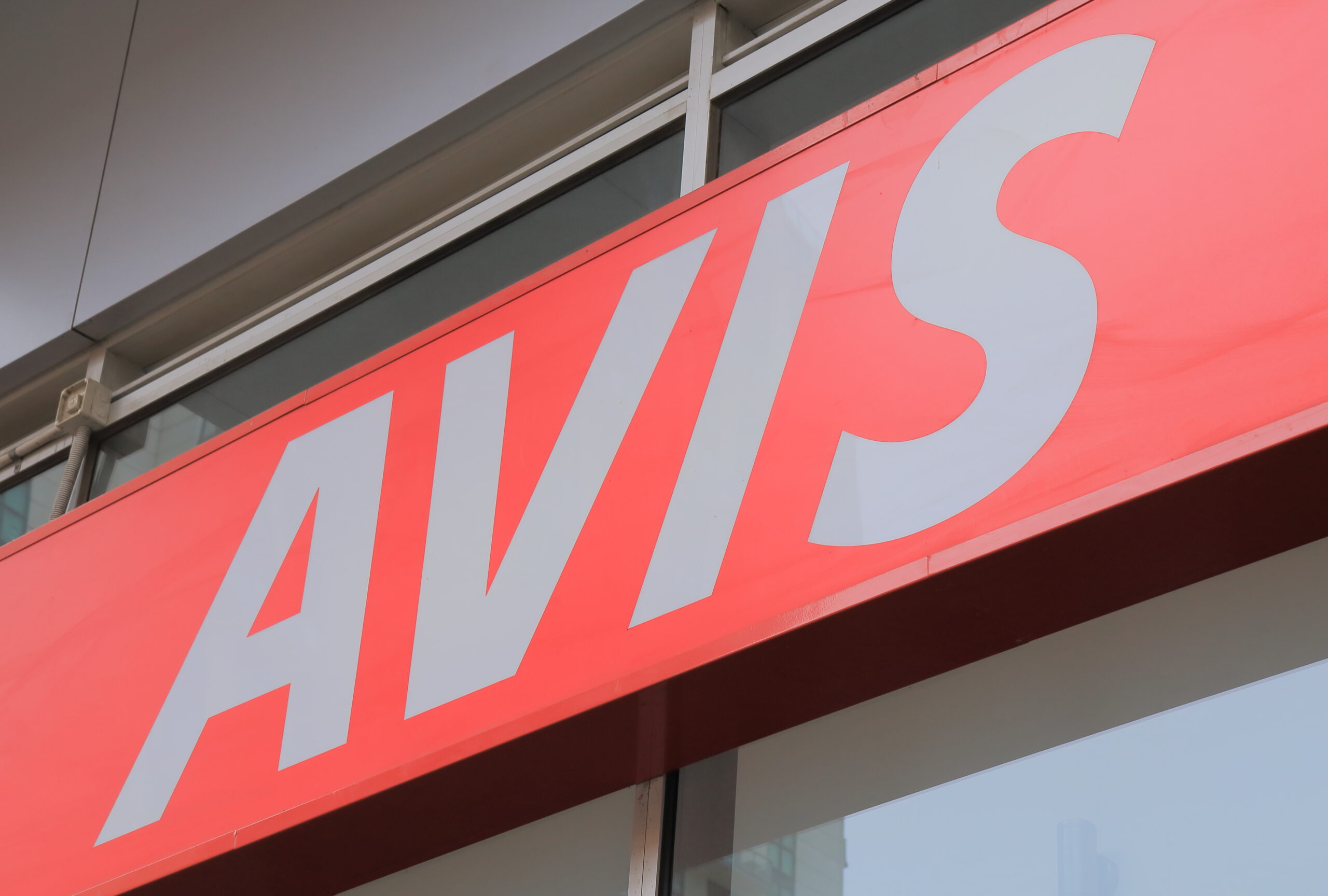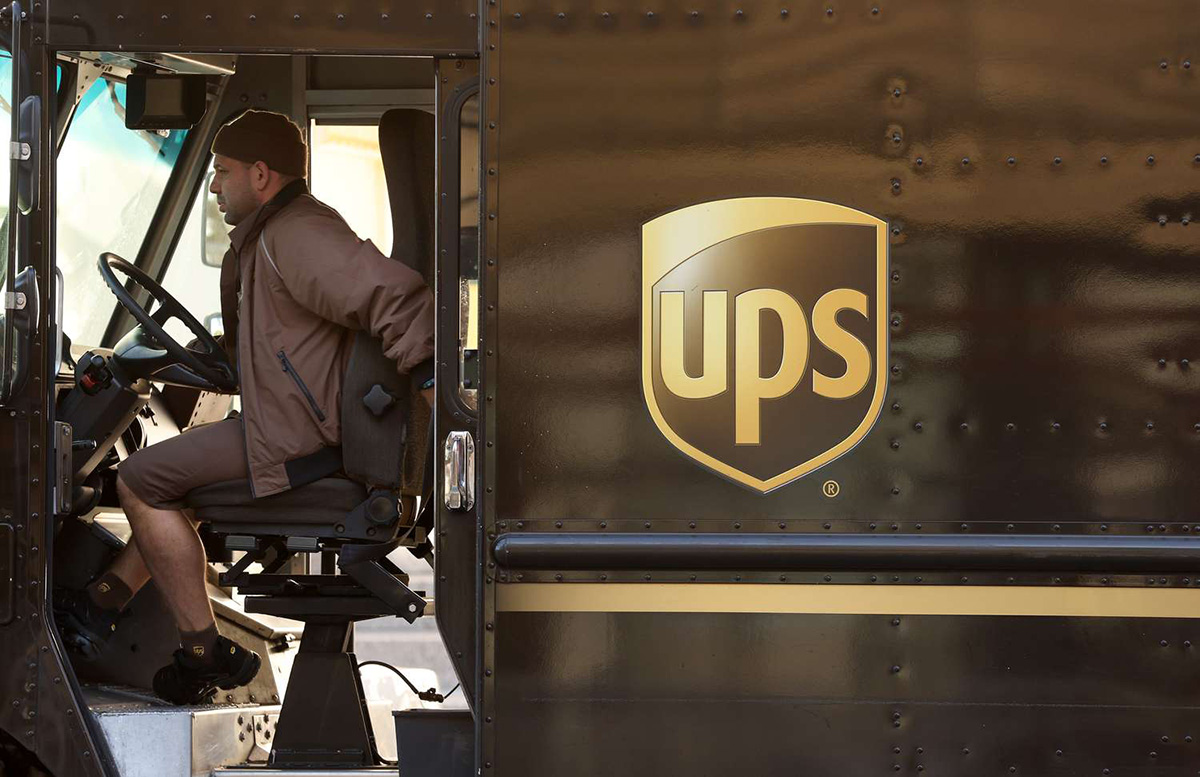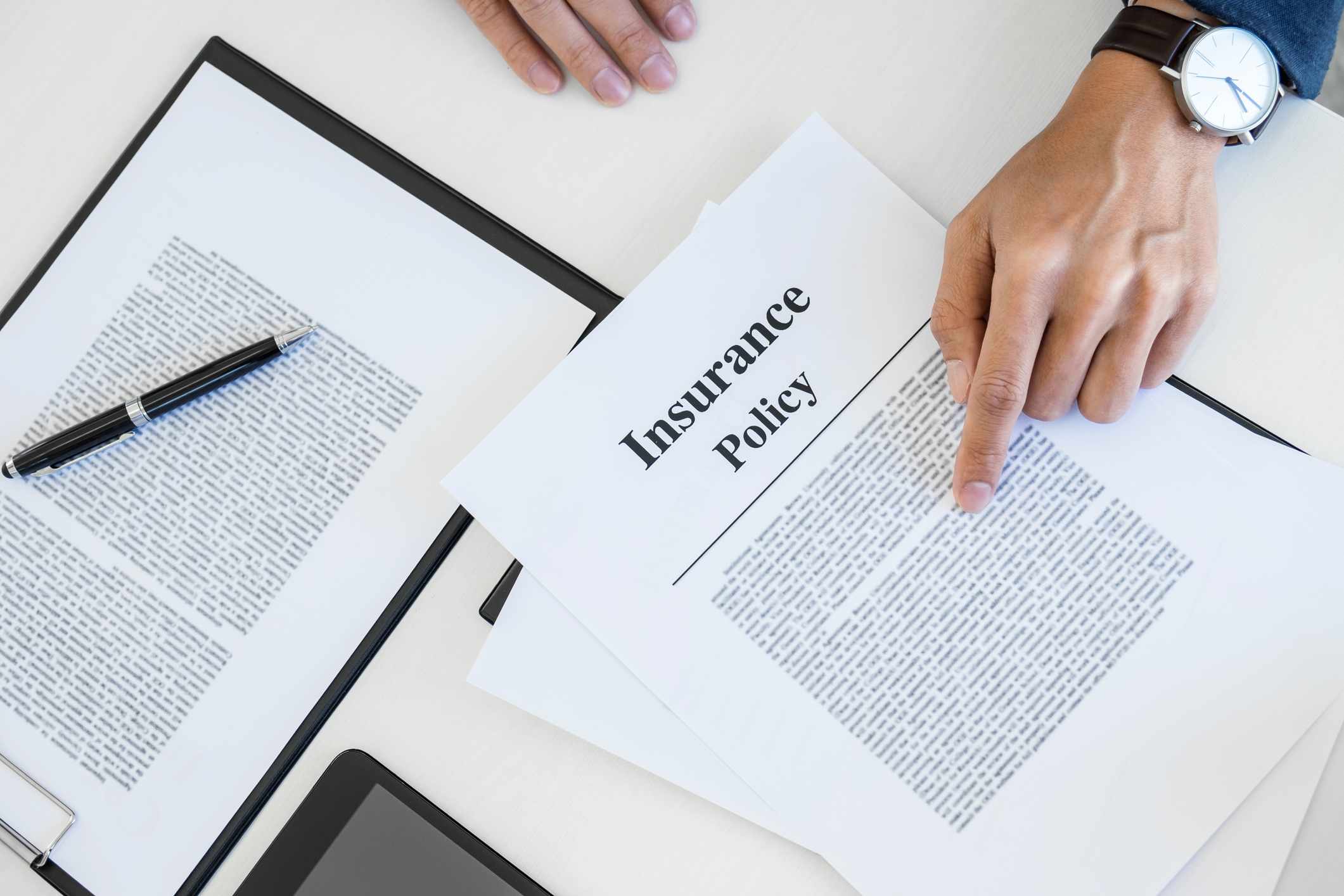

Finance
How Much Is UPS Insurance Per $100?
Published: November 16, 2023
Find out the cost of UPS insurance per $100 and manage your finances effectively.
(Many of the links in this article redirect to a specific reviewed product. Your purchase of these products through affiliate links helps to generate commission for LiveWell, at no extra cost. Learn more)
Table of Contents
Introduction
Welcome to our comprehensive guide on UPS insurance rates! If you are a business owner or an individual who frequently ships packages using UPS, it’s crucial to understand the importance of insurance coverage for your shipments. While UPS takes great care in handling your packages, accidents and unforeseen incidents can still occur during transit.
Having adequate insurance coverage ensures that you are financially protected in case of loss or damage to your packages. But how much does UPS insurance cost? In this article, we will break down the UPS insurance rates per $100 of coverage and provide you with valuable insights to help you make informed decisions when it comes to insuring your shipments.
Before we dive into the specifics, let’s take a moment to understand what UPS insurance is and how it works. UPS offers insurance coverage as an additional service to protect your packages against loss, damage, or theft while in transit. While UPS takes responsibility for the safe delivery of your packages, incidents beyond their control can occur, making insurance coverage crucial for peace of mind.
The amount of insurance coverage you choose for your shipments is typically based on the value of the goods being shipped. UPS allows you to insure your packages for up to $50,000 per package, depending on the contents and the destination. The insurance cost is then calculated based on the declared value or the cost you choose to insure.
Keep in mind that UPS insurance rates may vary depending on several factors, including the declared value of the package, the destination, the level of coverage required, and any additional services or features selected. Understanding these factors will provide you with a clear understanding of how UPS calculates their insurance rates.
In the following sections of this guide, we will delve into the factors that can affect UPS insurance rates, the specific rates per $100 of coverage, and tips for saving money on UPS insurance. So, let’s get started and gain a deeper understanding of UPS insurance rates and how you can protect your valuable shipments!
Understanding UPS Insurance
When it comes to shipping valuable items or goods, it’s important to have a clear understanding of the insurance options available. UPS offers insurance coverage to protect your packages from loss, damage, or theft during transit. Let’s dive deeper into how UPS insurance works:
1. Coverage Options: UPS provides different coverage options based on the value of your packages. You can select coverage up to $50,000 per package, depending on the contents and destination. It’s important to accurately declare the value of your items to ensure proper coverage.
2. Limitations and Exclusions: While UPS insurance offers valuable protection, it’s necessary to be aware of certain limitations and exclusions. Some high-value items, such as jewelry, precious metals, and antiques, may require additional documentation or separate insurance coverage. Additionally, coverage for certain types of damage, like internal or concealed damage, may have specific requirements.
3. Filing a Claim: In case of loss, damage, or theft, it’s crucial to follow the proper procedures to file a claim with UPS. You will need to provide supporting documentation, such as the original packaging, photos of the damaged item, and the invoice or receipt showing the value of the item. UPS has specific deadlines for filing claims, so it’s important to initiate the process as soon as possible.
4. Policy Terms: UPS insurance coverage is subject to certain terms and conditions, which are outlined in their insurance policy. It’s essential to review the policy carefully to understand the coverage details, deductibles, and any exclusions that may apply. Familiarizing yourself with the policy terms will ensure that you have a clear understanding of your rights and responsibilities.
5. Additional Services: UPS also offers additional services, such as declared value surcharge and declared value for carriage, which provide increased coverage beyond the standard liability. These services may incur additional costs but can provide greater protection for high-value shipments.
By understanding the nuances of UPS insurance, you can make informed decisions about the coverage you need for your packages. It’s advisable to assess the value and fragility of your items before deciding on the appropriate insurance coverage. Remember to read the insurance policy carefully and consult with UPS or an insurance professional if you have any questions or concerns.
Factors Affecting UPS Insurance Rates
The cost of UPS insurance for your shipments can vary depending on several factors. Understanding these factors will help you determine why rates may differ and allow you to make informed decisions when insuring your packages. Here are the key factors that can affect UPS insurance rates:
1. Declared Value: The declared value of your package, or the amount you choose to insure, directly impacts the insurance cost. UPS offers coverage up to $50,000 per package, and the insurance rate increases as the declared value increases. It’s important to accurately assess the value of your items to ensure adequate coverage while being mindful of the associated cost.
2. Destination: The destination of your package plays a role in determining the insurance rate. Shipments to certain locations, especially international destinations, may have higher insurance rates due to factors like shipping risks, customs procedures, and local regulations.
3. Shipment Type and Contents: The nature of the shipment and its contents also influence the insurance rate. High-value items or goods that are prone to damage or theft may have higher insurance rates. On the other hand, lower-value and less susceptible items may have lower insurance rates.
4. Insurance Coverage Level: UPS offers different coverage levels, such as declared value for carriage and declared value surcharge. These additional services provide increased coverage beyond the standard liability. Opting for higher coverage levels will result in higher insurance rates.
5. Additional Services and Features: UPS offers various additional services and features that can affect the insurance rate. For instance, services like signature confirmation or adult signature required may add extra security to your shipment and impact the insurance cost. Similarly, selecting special handling or fragile package services may result in higher insurance rates.
6. Historical Loss Data: UPS assesses historical loss and claims data to determine insurance rates for certain types of shipments or specific destinations. If there is a higher incidence of loss or damage for a particular category of shipments, the insurance rates may be adjusted accordingly.
7. Packaging: Proper packaging is crucial for protecting your shipments during transit. UPS provides guidelines for packaging materials and techniques to ensure the safe transportation of your packages. Inadequate packaging or non-compliance with UPS packaging standards can increase the risk of damage and, consequently, impact the insurance rate.
It’s important to note that while these factors influence UPS insurance rates, they are subject to change and may vary over time. UPS regularly evaluates and updates their insurance pricing based on various factors, market conditions, and risk analysis.
By understanding the factors affecting UPS insurance rates, you can make informed decisions when insuring your packages. Consider the value, destination, and nature of your shipments, and evaluate the additional services and features offered by UPS to ensure your packages are adequately protected.
UPS Insurance Rates Per $100
Understanding the UPS insurance rates per $100 of coverage is essential for calculating the cost of insuring your packages. UPS follows a tiered pricing structure, with the insurance rates increasing as the declared value of the package increases. Here are the general UPS insurance rates per $100 for domestic shipments within the United States:
- For shipments with a declared value up to $100, the insurance cost is $2.75 per $100 of coverage.
- For shipments with a declared value between $100.01 and $300, the insurance cost is $2.95 per $100 of coverage.
- For shipments with a declared value between $300.01 and $500, the insurance cost is $3.55 per $100 of coverage.
- For shipments with a declared value between $500.01 and $1,000, the insurance cost is $4.70 per $100 of coverage.
- For shipments with a declared value between $1,000.01 and $5,000, the insurance cost is $7.45 per $100 of coverage.
- For shipments with a declared value between $5,000.01 and $50,000, the insurance cost is $0.90 per $100 of coverage.
It’s important to note that these rates apply to domestic shipments within the United States, and international shipments may have different insurance rate structures depending on the destination country and other factors.
When calculating the insurance cost for your shipment, round up the declared value to the nearest whole dollar amount. For example, if the declared value of your package is $350.50, round it up to $351, and then divide by $100 to calculate the number of $100 increments. In this case, you would require three $100 increments, resulting in a total insurance cost of $3.55 x 3 = $10.65.
Keep in mind that UPS provides coverage up to $50,000 per package. If the declared value exceeds $50,000, UPS may require additional documentation or separate commercial insurance coverage.
It’s important to review the UPS insurance rates periodically, as they may be subject to change. If you have specific questions or need more details about the current rates, it’s recommended to contact UPS directly or consult their official website for the most accurate and up-to-date information.
Comparing UPS Insurance Rates to Other Shipping Providers
When it comes to shipping packages, it’s essential to compare insurance rates offered by different shipping providers to ensure you’re getting the best value for your money. While UPS is a popular choice for many businesses and individuals, it’s worthwhile to examine how their insurance rates compare to those of other shipping providers. Here’s a comparison of UPS insurance rates with some other major shipping companies:
- FedEx: FedEx also offers insurance coverage for shipments, with rates based on the declared value. For domestic FedEx shipments, the insurance rates per $100 of coverage are generally similar to UPS. However, it’s important to note that rates may vary depending on the specific service level and destination.
- USPS: The United States Postal Service (USPS) offers insurance coverage for domestic and international shipments. USPS insurance rates are generally lower than UPS and FedEx, making it an attractive option for individuals and small businesses shipping lower-value items. Rates may vary based on the package weight, dimensions, and destination.
- DHL: DHL is a global shipping provider that offers insurance coverage for international shipments. Their insurance rates vary depending on the destination country, shipping method, and declared value. DHL rates may be competitive for international shipments, but it’s advisable to compare rates for specific destinations and packages.
It’s important to note that insurance rates may fluctuate and depend on various factors, including the declared value, destination, and the level of coverage required. Additionally, each shipping provider may have specific terms, limitations, and exclusions regarding their insurance coverage.
When comparing insurance rates, it’s crucial to consider not only the cost but also the level of coverage provided. Evaluate the specific needs of your shipments and determine the appropriate insurance coverage based on the value and vulnerability of the items being shipped.
Remember to review the insurance policies and guidelines of each shipping provider to understand the terms and conditions, claim procedures, and any limitations or exclusions that may apply. Additionally, consider the reliability, reputation, and customer service offered by the shipping providers when making your decision.
By comparing UPS insurance rates with other shipping providers and considering the specific needs of your shipments, you can make an informed choice regarding insurance coverage that provides the best value and protection for your packages.
How to Determine the Insurance Coverage Needed
Determining the appropriate insurance coverage for your shipments is crucial to ensure that you are adequately protected in case of loss, damage, or theft. Here are some steps to help you determine the insurance coverage needed:
1. Assess the Value: Start by determining the value of the items you are shipping. Consider the cost of the items, their market value, and any potential financial loss you would experience if they were lost or damaged during transit. Accurately assessing the value will help you determine the appropriate insurance coverage.
2. Evaluate the Risk: Consider the nature of the items being shipped and the associated risks during transit. Fragile or valuable items, such as electronics or artwork, may require higher insurance coverage due to the increased risk of damage or theft. Items that are less susceptible to damage or have a lower value may require lower coverage.
3. Research Insurance Options: Familiarize yourself with the insurance options offered by your shipping provider, such as UPS. Understand the coverage limits, deductibles, and any additional services available to enhance the protection of your shipments. Consider any specific requirements or limitations for certain types of items.
4. Consider Destination: The destination of your package can impact the insurance coverage needed. International shipments, for example, may require additional insurance coverage due to longer transit times, increased handling, and potential customs complications. Evaluate the specific risks associated with the destination and adjust the coverage accordingly.
5. Evaluate Historical Loss Data: Research the historical loss and claims data provided by your shipping provider. Understanding the incidence of loss or damage for specific types of shipments or destinations can help you gauge the level of insurance coverage needed. Look for any patterns or trends in the data that may influence your coverage decisions.
6. Consult with an Insurance Professional: If you are shipping high-value items or have specific concerns about insurance coverage, it may be beneficial to consult with an insurance professional. They can provide expert advice based on your unique circumstances and help you determine the appropriate coverage needed to protect your shipments.
Remember, it’s always better to err on the side of caution when it comes to insurance coverage. While it may result in higher costs, it provides peace of mind and financial protection in case of unforeseen incidents. Regularly review and reassess your insurance needs as your shipping requirements change.
By carefully assessing the value, evaluating the risk, researching insurance options, considering the destination, evaluating historical loss data, and consulting with an insurance professional if necessary, you can determine the insurance coverage needed to safeguard your shipments.
Tips for Saving Money on UPS Insurance
While insurance coverage is crucial for protecting your shipments during transit, it’s natural to want to save money on insurance costs. Here are some tips to help you save money on UPS insurance:
1. Accurately Declare the Value: When insuring your packages, ensure that you accurately declare the value of the items being shipped. Overvaluing your packages can result in higher insurance costs. Take the time to assess the true value of the items and declare it accordingly.
2. Evaluate Packaging: Proper packaging is essential for protecting your shipments. Inadequate packaging can lead to damage during transit, which may necessitate filing a claim. By using appropriate packaging materials and techniques, you can reduce the risk of damage and lower the chances of needing to use your insurance coverage.
3. Optimize Shipment Method: UPS offers various shipping methods with different service levels and insurance options. Evaluate your shipping needs and choose the most cost-effective method that aligns with your insurance requirements. For less valuable items or shipments with lower risk, consider using a shipping method with lower insurance coverage to reduce costs.
4. Consider a Higher Deductible: If you are comfortable assuming a higher level of risk, opting for a higher deductible can lower your insurance premiums. A higher deductible means that you will be responsible for covering a greater portion of any potential losses, but it can result in lower monthly insurance costs.
5. Bundle Shipments: If you frequently ship multiple packages, consider bundling them into a single shipment instead of sending them individually. By consolidating your packages, you can potentially qualify for higher insurance coverage tiers with lower rates per $100 of coverage, resulting in cost savings.
6. Negotiate Rates: If you are a high-volume shipper or have a long-standing relationship with UPS, consider reaching out to their customer service or sales team to negotiate better insurance rates. They may be able to offer customized pricing based on your shipping needs and expectations.
7. Regularly Review Insurance Needs: As your business evolves, periodically review your insurance needs to ensure that you are not over-insuring your shipments. Reassess the value, vulnerability, and shipping requirements of your packages to ensure that you have the appropriate level of coverage without paying for unnecessary insurance.
It’s important to strike a balance between cost savings and adequate insurance coverage. While saving money is important, it should not come at the expense of leaving your shipments underinsured. Evaluate your specific needs and assess any trade-offs to make informed decisions about saving money on UPS insurance.
By implementing these tips, you can find ways to save money on UPS insurance while still maintaining appropriate coverage for your shipments. Review your insurance strategy periodically to ensure that it aligns with the evolving needs of your business and shipping requirements.
Conclusion
Understanding UPS insurance rates and how to navigate the insurance landscape is vital for anyone who frequently ships packages. By comprehending the factors that affect UPS insurance rates, you can make informed decisions regarding the coverage needed for your shipments.
In this guide, we explored the importance of UPS insurance coverage and its role in protecting your packages during transit. We discussed the factors that influence UPS insurance rates, such as the declared value, destination, shipment type, and additional services. Understanding these factors allows you to accurately calculate the cost of insuring your packages and select the appropriate coverage level.
We also compared UPS insurance rates with those of other shipping providers, including FedEx, USPS, and DHL. This comparison helps you determine which provider offers the most cost-effective insurance options based on your specific shipping needs.
Additionally, we provided tips for determining the insurance coverage needed and saving money on UPS insurance. By accurately assessing the value of your items, evaluating the risk, optimizing packaging, and considering cost-saving measures such as higher deductibles and bundled shipments, you can find ways to save on insurance costs without compromising coverage.
Remember to review your insurance needs periodically to ensure they align with your evolving shipping requirements. As market conditions change and your business grows, adjusting your insurance coverage accordingly will help you maintain adequate protection while managing costs effectively.
By following these guidelines and staying informed about UPS insurance rates, you can confidently insure your shipments, protect your valuable items, and ensure a smooth and secure transit process. Remember to consult with UPS or an insurance professional for specific questions or concerns regarding your insurance needs.
Shipping packages should not be a cause for stress or financial burden. With the right understanding of UPS insurance rates, you can have peace of mind knowing that your shipments are protected every step of the way.














